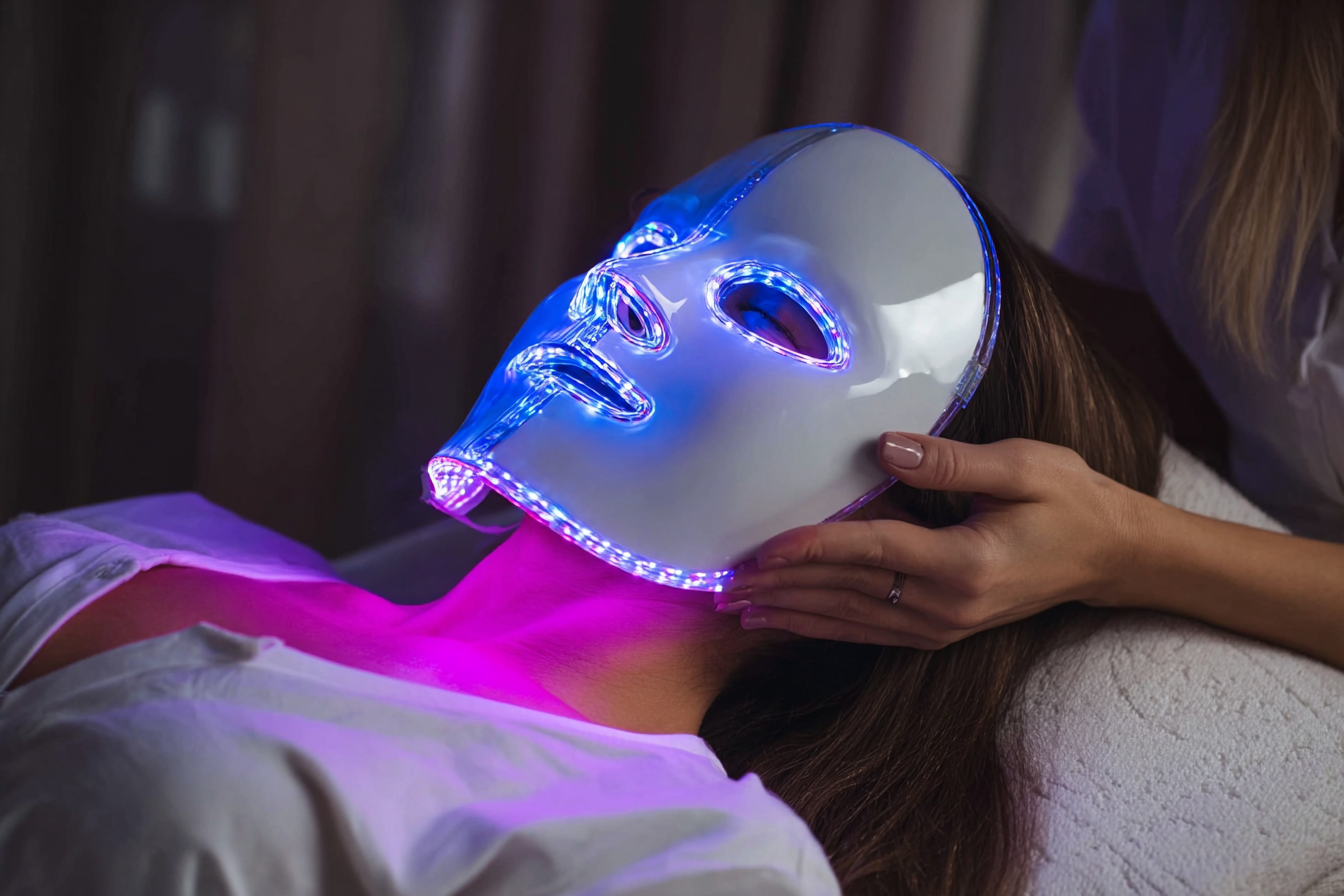The Under-Reported Impact of Visible Light on Skin Ageing and Pigmentation
Our newest columnist, Dr. Lylah Hill has amassed an impressive combination of clinical expertise as well as academic and histological research across Aesthetic Dermatology, Tissue Regeneration & Biological Science of Skin Ageing.In this Spotlight, Dr. Lylah Hill examines how much of photobiology has focused on the role of Ultraviolet Radiation (UVR) in cutaneous health with significant effects of visible light (VL) being under-reported
The solar spectrum consists of Ultraviolet (UV) (290-400 nm), Visible Light (VL) (400-700 nm) and Infra Red (IR) (>700 nm) radiation. Only 5% of solar radiation reaching the terrestrial atmosphere is Ultraviolet Radiation, Visible Light comprises 44% penetrating at depths of 90 to 750um vs Ultraviolet Radiation which penetrates at 1.5 to 90um. High amounts of unstable oxygen containing molecules that easily react with other molecules in a cell, causing damage, referred to as Reactive Oxygen Species (ROS), originate secondary to UV, 4% from UVB and 46% UVA, with an estimated 50% of ROS ascribed to Visible Light exposure. With the photobiological effects of Visible Light becoming more evident, and filters in sunscreen designed to scatter, reflect and absorb UV photons with wavelength up to 380 nm rather than Visible Light, discussion around Visible Light is beginning to evolve.
Visible Light is shown to be a significant contributor of cutaneous photoaging and photopigmentation, and therefore plays a critical role in skin health. It is a potent generator of oxidative stress, with the presence of Reactive Oxygen Species at cellular levels and subsequent release of pro-inflammatory cytokines, (signaling molecules that trigger and intensify inflammation), as well as collagenase enzymes. This Visible Light-induced cascade via activation of Matrix metalloproteinases (MMP’s -enzymes which break down proteins) resulting in the degradation of important structural proteins such as collagen and elastin, lipids and nucleic acid within the epidermal and dermal layers. Furthermore, Visible Light is considered to reach as far as the hypodermis, the deepest layer of skin.
Despite the skin being equipped with endogenous antioxidants to neutralise Reactive Oxygen Species and repair damage, and with such defense systems playing an integral role in protecting even extracellular proteins such as collagen, it has become increasingly recognised that as little as a single, acute exposure to dose dependant solar UVA1 and Visible Light can overcome the skin’s natural defence mechanisms, markedly reducing endogenous antioxidant levels within the skin with subsequent oxidative damage to skin cells, leading to loss of skin barrier integrity, accelerated premature skin ageing and increased photopigmentation to name a few.
Research is increasingly recognising the role of Visible Light induced redness and inflammation, cutaneous pigmentation, thermal damage and Reactive Oxygen Species independent of Ultraviolet Radiation. Dose dependent Visible Light exposure results in transient and long term cutaneous photoaging pigmentary effects, with reports suggesting Fitzpatrick Skin Types II to VI experience more intense and persistent Visible Light induced photo pigmentory effects. Studies have shown that even in darker skin types, it is UVA and Visible Light which is most likely to cause such effects, with histological evidence suggesting photoageing secondary to Visible Light and UVA in African Americans, Hispanics as well as Asians, Middle Easterns and so forth.
As photodamage results from chronic Ultraviolet Radiation and Visible Light exposure, photoageing relates to lifelong sun exposure determined by climate, geographical location and behaviour. The World Health Organisation (WHO) has recently classified ageing under WHO 11th international statistical classification of disease and related health problems, hence with the concept of ageing related health issues being challenged from that which was once traditionally considered a ‘normal’ process, this brings greater attention to therapeutic interventions and preventative strategies.
Despite increasing knowledge on the significant impact Visible Light has on skin health particularly in darker skin tones, such negative effects of Visible Light are not targeted by most available sunscreens. Recognising and addressing barriers of sunscreens remains pertinent. Commercial sunscreens do not allow for a comprehensive, all inclusive photoprotection against all photo damaging wavelengths ie. Visible Light, Ultraviolet Radiation and InfraRed-A within a single product hence the unbalanced protection between wavelengths in current commercial sunscreens is an ongoing concern. Further sunscreen limitations include white casts from physical non-micronized sunscreen filters, impractical for darker skin tones by hindering acceptable cosmetic appearance. Despite efforts to reduce white residue, by formulating metal oxide’s into nanosized particles allowing more transparency, this reduces their UVR and Visible Light blocking ability for all skin types. The systemic absorption and safety of more transparent chemical sunscreens is questionable and further studies are required.
Although studies show cosmetic elegance remains a major element in determining adherence, and cosmesis of sunscreen formulas being critical for patient compliance, recent surveys highlight physicians never or rarely consider the phototype of their patient before prescribing sunscreen with cosmetic elegance considered a low priority when guiding patients on photoprotection. Although tinted sunscreen can be a viable option, a wider range of colours is required, with most options limited to light, medium and dark. This disregards the unprecedented amalgamation of different ethnic groups which increasingly exists within today's society. Furthermore, better understanding of interactions between UV filters, iron oxide and pigment titanium dioxide, their physical properties and their ability to attenuate transmittance of VL, is needed.
The scope of this article highlights the increasing role of skincare antioxidants in cutaneous stress defense response and repair, to maintain skin health, helping slow down features of skin ageing, and subsequently preserve a harmonious tone, texture and overall healthy skin appearance for an extended period in all skin types.










